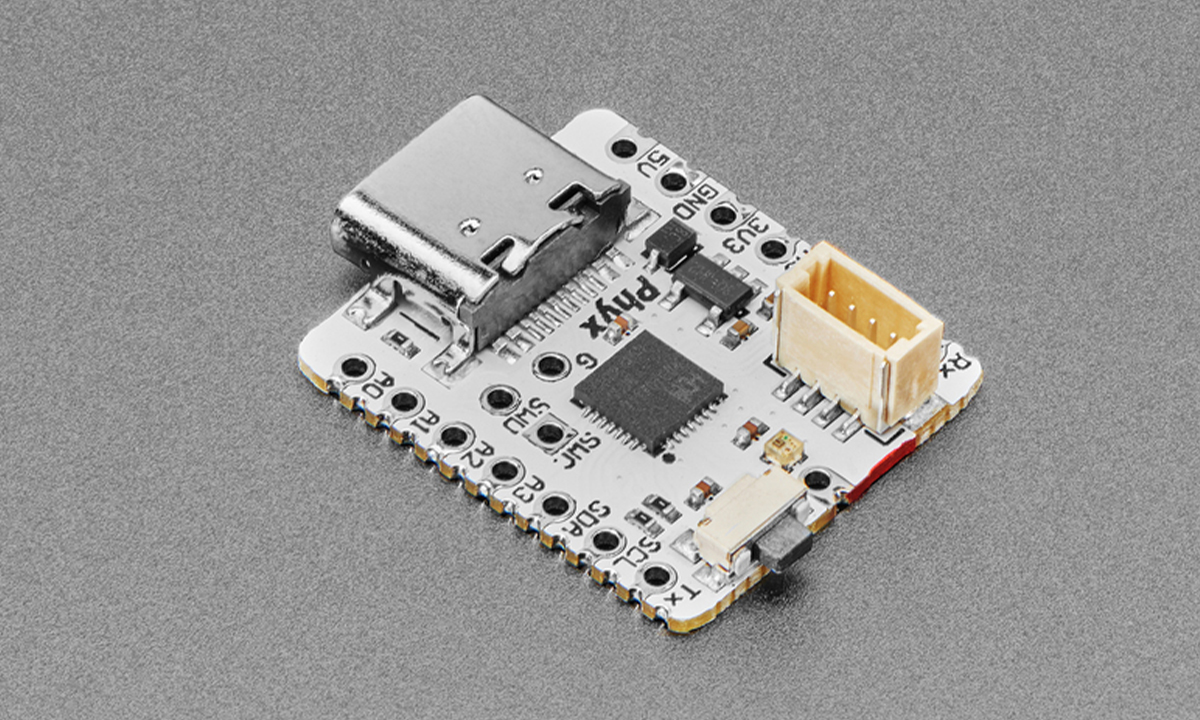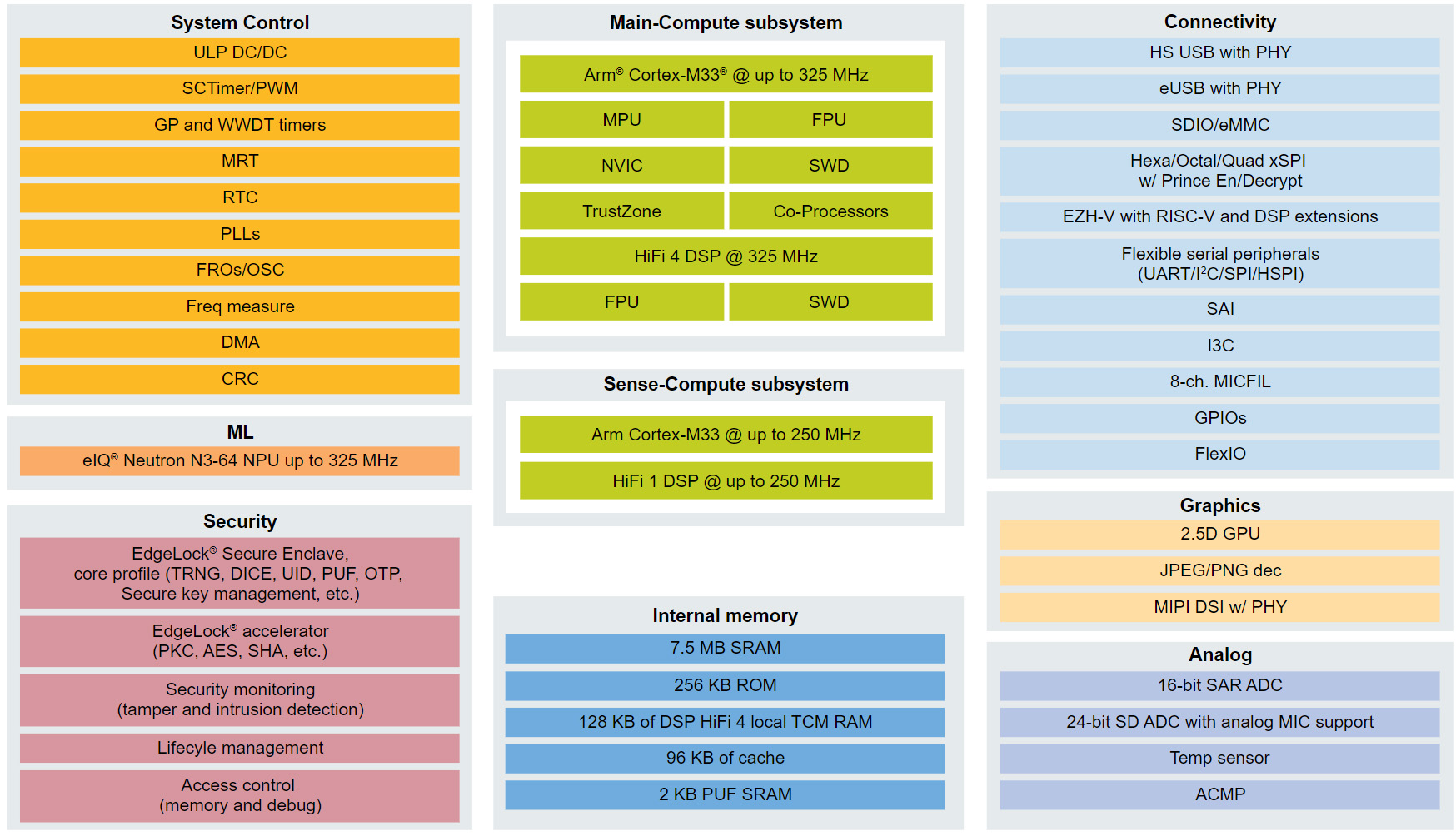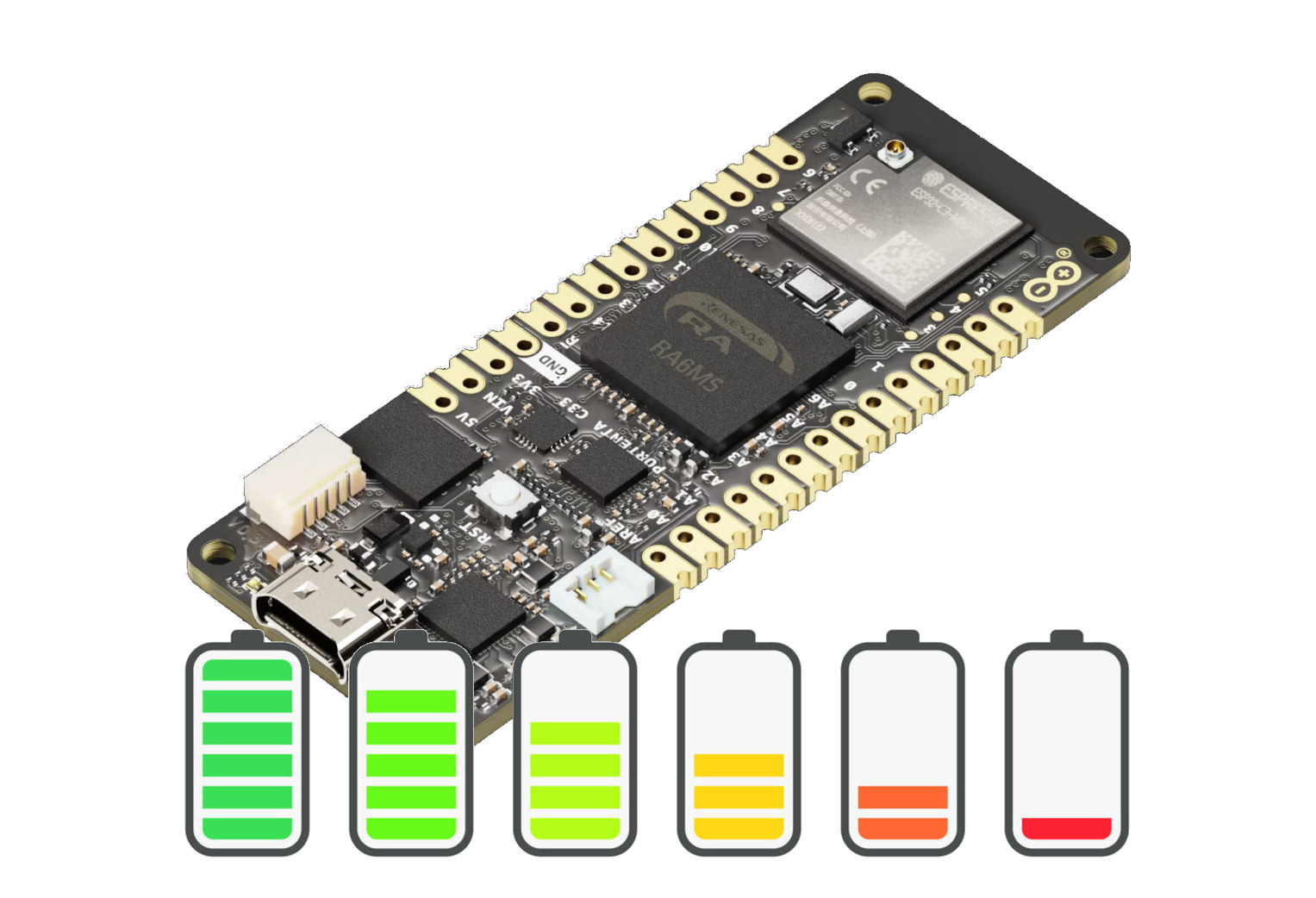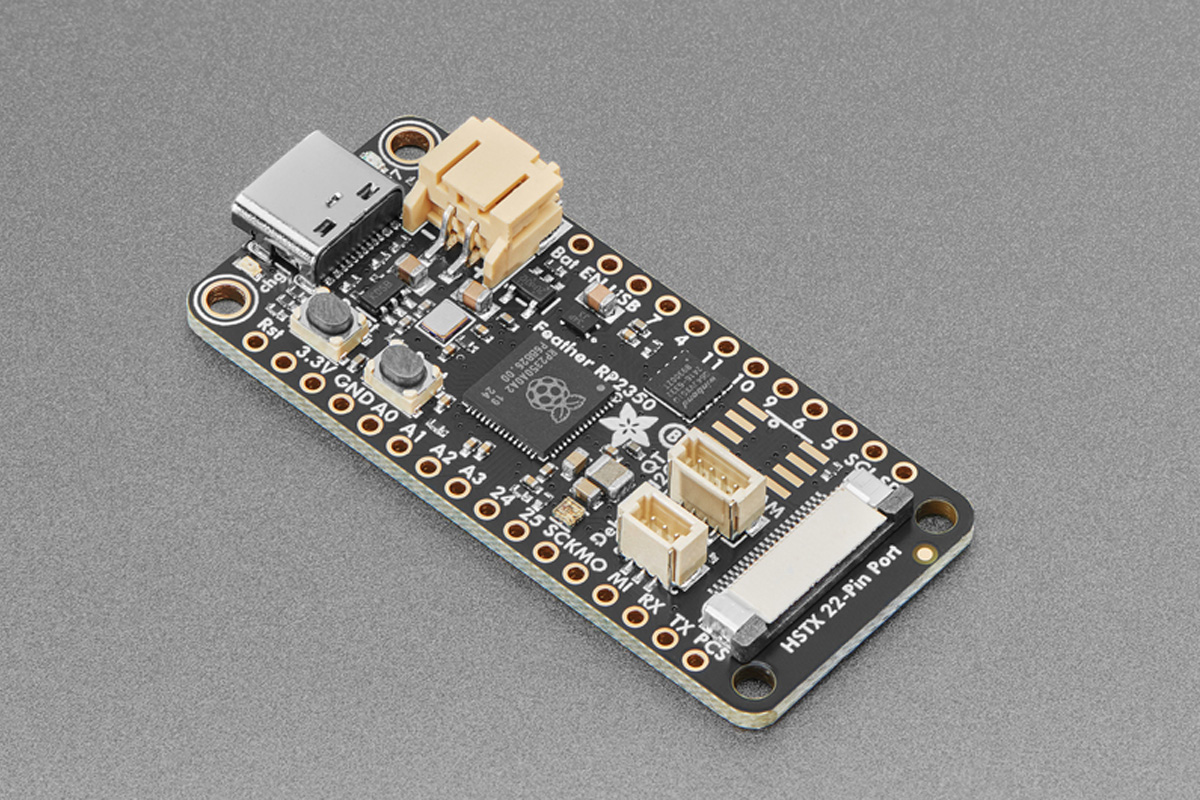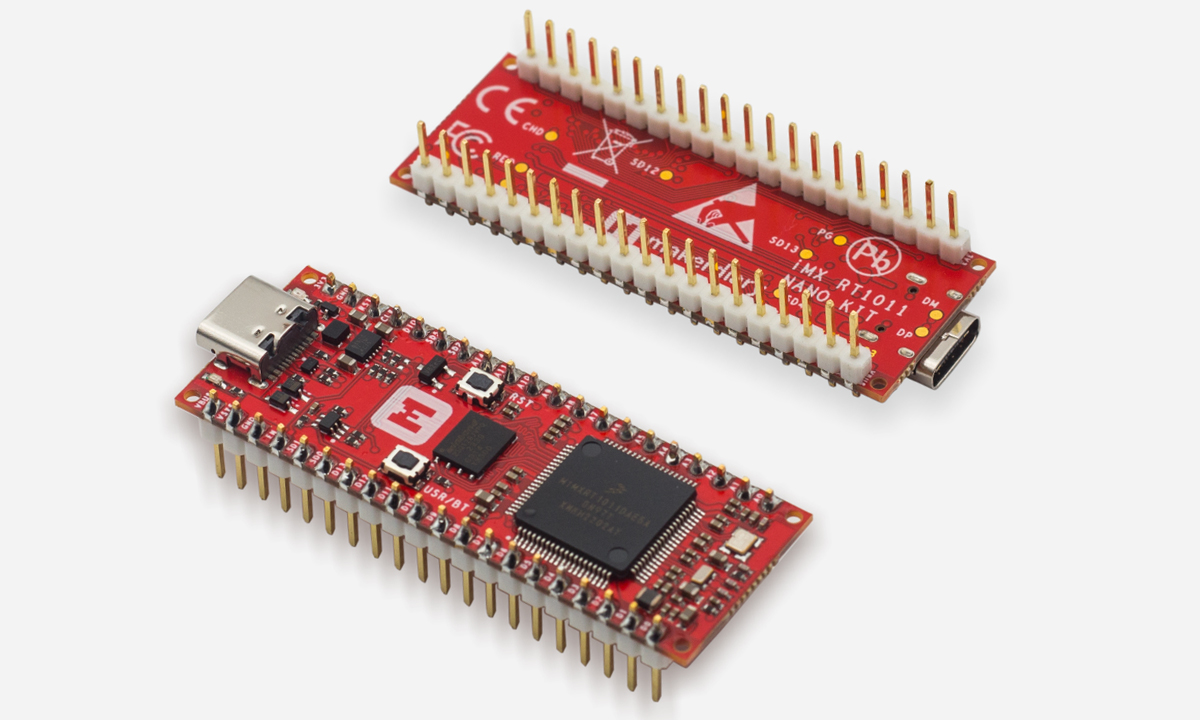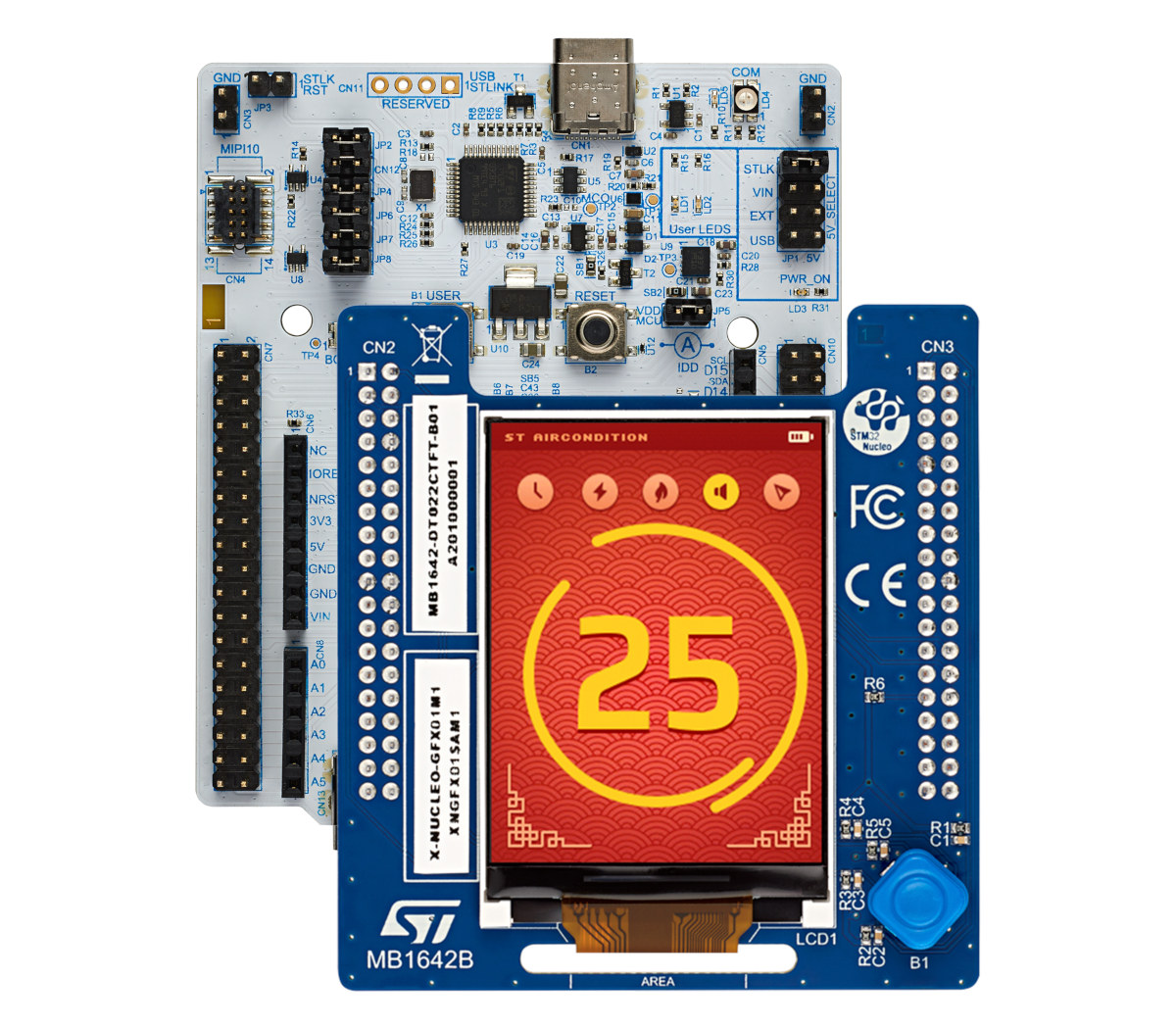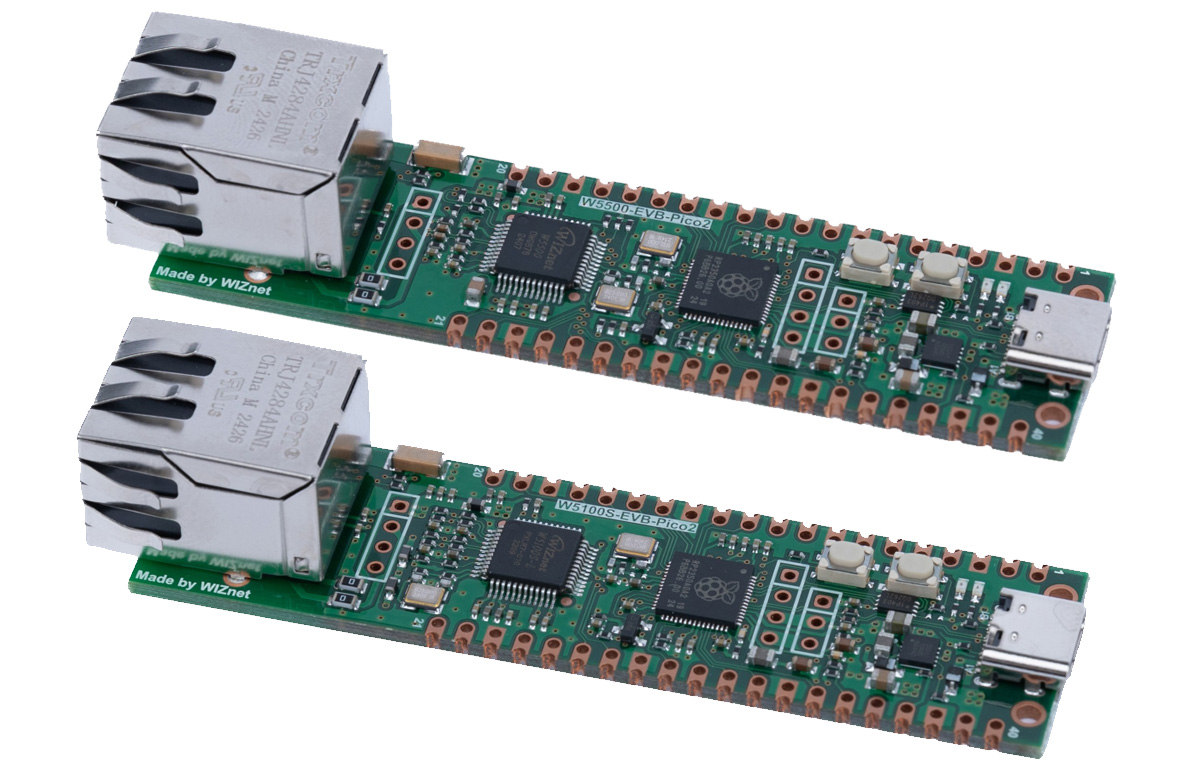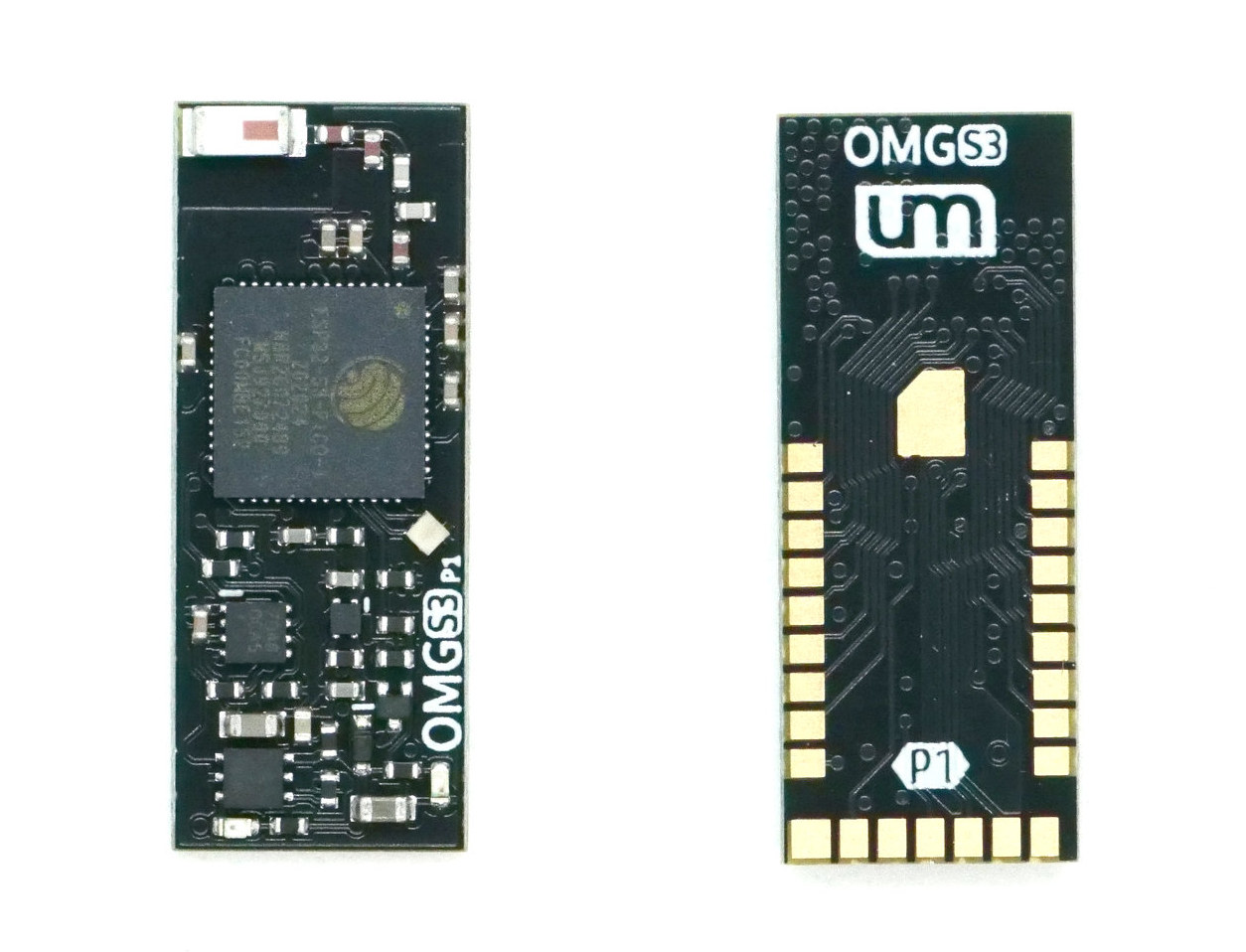The LANA-TNY is a compact development board created by Phyx and built around the CH32V203 RISC-V microcontroller. It offers a low-cost solution for embedded development and features a built-in USB bootloader, eliminating the need for an external programmer to flash the firmware. With a USB-C connector and a minimalist design, the board provides essential components to start development quickly. At its core, the Phyx LANA-TNY is powered by the CH32V203G6U6, a 32-bit RISC-V microcontroller from WCH Electronics, capable of running up to 144MHz with 1-cycle multiply/divide operations. It includes 10KB of SRAM, 32KB of single-cycle Flash, and 224KB of additional external flash for program or data storage, though the external memory operates at a slower speed. The CH32V203 microcontroller supports a range of peripherals, including ADC, timers, USB devices, UART, I2C, and SPI, making it suitable for a wide variety of embedded applications. Designed in the style of Adafruit’s QT […]
NXP i.MX RT700 dual-core Cortex-M33 AI Crossover MCU includes eIQ Neutron NPU and DSPs
NXP has recently announced the release of NXP i.MX RT700 RT700 AI crossover MCU following the NXP i.MX RT600 series release in 2018 and the i.MX RT500 series introduction in 2021. The new i.MX RT700 Crossover MCU features two Cortex-M33 cores, a main core clocked at 325 MHz with a Tensilica HiFi 4 DSP and a secondary 250 MHz core with a low-power Tensilica HiFi 1 DSP for always-on sensing tasks. Additionally, it integrates a powerful eIQ Neutron NPU with an upgraded 7.5 MB of SRAM and a 2D GPU with a JPEG/PNG decoder. These features make this device suitable for applications including AR glasses, hearables, smartwatches, wristbands, and more. NXP i.MX RT700 specifications: Compute subsystems Main Compute Subsystem Cortex-M33 @ up to 325 MHz with Arm TrustZone, built-in Memory Protection Unit (MPU), a floating-point unit (FPU), a HiFi 4 DSP and supported by NVIC for interrupt handling and SWD […]
Arduino releases a power management library for Arduino Pro modules to optimize power consumption
Arduino has released a new power management library designed for Arduino Pro modules to help users monitor battery usage, fine-tune charging parameters, and optimize the power consumption of their Arduino code by notably enabling sleep and standby modes on supported devices. Currently, the Arduino Portenta H7 boards, the Arduino Portenta C33, and the Nicla Vision module are supported by the new power management library. The company explains some boards consume under 100 microamperes in deep sleep mode enabling months or even years of continuous runtime on a single charge, so making use of those features is important to lower the power consumption of battery-powered IoT devices and wearables. Arduino power management library key features: Battery monitoring – Reports battery metrics such as voltage, current, percentage, and temperature. Battery health tracking – Monitors battery health with detailed insights into temperature and reported capacity. Charging control – Monitors and adjusts charging parameters […]
Adafruit Feather RP2350 board with HSTX port enables video output and display interfaces
“Adafruit Feather RP2350 with HSTX port” is a Raspberry Pi RP2350 MCU development board that features an onboard 22-pin high-speed serial transmit interface (HSTX) port. The board also features a built-in 200mA+ LiPo charger, an RGB LED, a STEMMA QT connector, and a USB Type-C port for power and programming. The board is compatible with FeatherWings and supports development with various programming languages. These features make this board suitable for a wide range of applications, from embedded projects and IoT devices to educational purposes and prototyping. Previously we have covered a variety of RP2350-powered development boards, including the MOTION 2350 Pro, designed for robotics and motor control; the Solder Party’s RP2350 Stamp, ideal for space-constrained applications; and the WIZnet Raspberry Pi RP2350 boards designed for IoT and internet-connected applications. Feel free to check those out if you want to take a look at some of the unique development boards. Adafruit […]
$15 Makerdiary iMX RT1011 Nano Kit runs Zephyr RTOS on 500 MHz NXP iMX RT1011 crossover MCU
Makerdiary’s iMX RT1011 Nano Kit is a prototyping board featuring the NXP iMX RT1011 Cortex-M7 Crossover MCU running Zephyr RTOS. It offers 128 KB of on-chip RAM, configurable as TCM or general-purpose memory, and supports high-speed USB, UART, SPI, I2C, SAI, PWM, GPIO, and ADC, making it suitable for a variety of embedded applications. The board also includes a 128 Mbit external QSPI flash with XIP support, flexible power management, a programmable LED and Button, and a USB-C connector. It features a dual-row 40-pin layout (DIP/SMT) with up to 33 multi-function GPIO pins, 15 of which can be used as ADC inputs, along with a Serial Wire Debug (SWD) port. Optional pre-soldered headers are available for added flexibility. We previously covered other iMX RT1011-based development boards, such as the Olimex RT1010-Py running MicroPython and Adafruit Metro M7 with CircuitPython firmware. Be sure to check them out if you’re interested. Makerdiary’s […]
STMicro STM32C071 Arm Cortex-M0+ MCU adds USB FS interface, targets inexpensive GUI implementations
STMicro has just announced the availability of the STM32C071 Arm Cortex-M0+ microcontroller part of the STM32C0 series with 128 KB of flash and 24 KB of RAM suitable for driving a small 320 x 240 display using an SPI interface and building affordable graphical user interfaces (GUI) for appliances. The microcontroller also adds a crystal-less USB FS device interface, additional SPI and I2C interfaces, and extra GPIOs (up to 61) all of which are 5V tolerant. For evaluation and quickly get started with firmware development, STMicro also offers the NUCLEO-C071RB development board and X-NUCLEO-GFX01M2 display expansion board. STM32C071 low-cost Cortex-M0+ MCU for GUI in appliances STM32C071 specifications: MCU Core -Arm 32-bit Cortex-M0+ CPU @ up to 48 MHz Memory – Up to 24KB SRAM with HW parity check Storage – Up to 128KB flash with protection and securable area Peripheral interfaces Up to 61x fast I/Os, all 5V tolerant 5-channel […]
Raspberry Pi RP2350 dev board features Ethernet RJ45 port with WIZNet W5500 or W5100S Ethernet controller
WIZnet has recently launched two new Raspberry Pi RP2350-based Ethernet boards – W5100S-EVB-Pico2 and W5500-EVB-Pico2 – based on different Ethernet controllers. The entry-level W5100S-EVB-Pico2 is built around the W5100S controller that features 4 independent sockets and 16 Kbytes of buffer memory. On the other hand, the W5500-EVB-Pico2 is built around the W5500, which features 8 sockets, 32 Kbytes of buffer memory, and improved security features such as OTP memory, Secure Boot, and Arm TrustZone technology. These make the W5500-EVB-Pico2 ideal for projects with robust network handling and advanced security measures. After the recent announcement of the $5 Raspberry Pi Pico 2 we have seen many development boards built around the RP2350 MCU, including the Challenger+ RP2350 WiFi6/BLE5, the Solder Party’s RP2350 Stamp, the Seeed Studio XIAO RP2350, the Cytron MOTION 2350 Pro, and more. Feel free to check those out If you are interested in RP2350-based dev boards. W5100S-EVB-Pico2 and […]
ESP32-S3-PICO-based OMGS3 is the world’s smallest fully-featured ESP32-S3 module/board
Based on the ESP32-S3-PICO system-in-package (SiP), Unexpected Maker OMGS3 is a small, yet full-featured ESP32-S3 module/board whose designer claims is the world’s smallest in its category at just 25x10mm in size. It replaces the earlier Unexpected Maker NanoS3 based on the ESP32-S3FN8 SoC measuring 28 x 11 mm. The OMGS3’s ESP32-S3-PICO SiP integrates a dual-core ESP32-S3 WiFi and BLE wireless SoC, 8MB QSPI flash, and 2MB QSPI PSRAM. The board itself also includes a 3D antenna, an RGB LED, two LEDs for power and charging, and I/Os are exposed through 26 solder pads. Unexpected Maker OMGS3 specifications: SiP – Espressif ESP32-S3-PICO SoC ESP32-S3 dual-core Tensilica LX7 up to 240 MHz with 512KB SRAM, 16 KB RTC SRAM Wireless – WiFi 4 and Bluetooth 5 LE + Mesh Memory – 2MB QSPI PSRAM Storage – 8MB QSPI flash Antenna – High-gain 3D antenna I/Os via 26x solder pads Up to 17x GPIO […]


